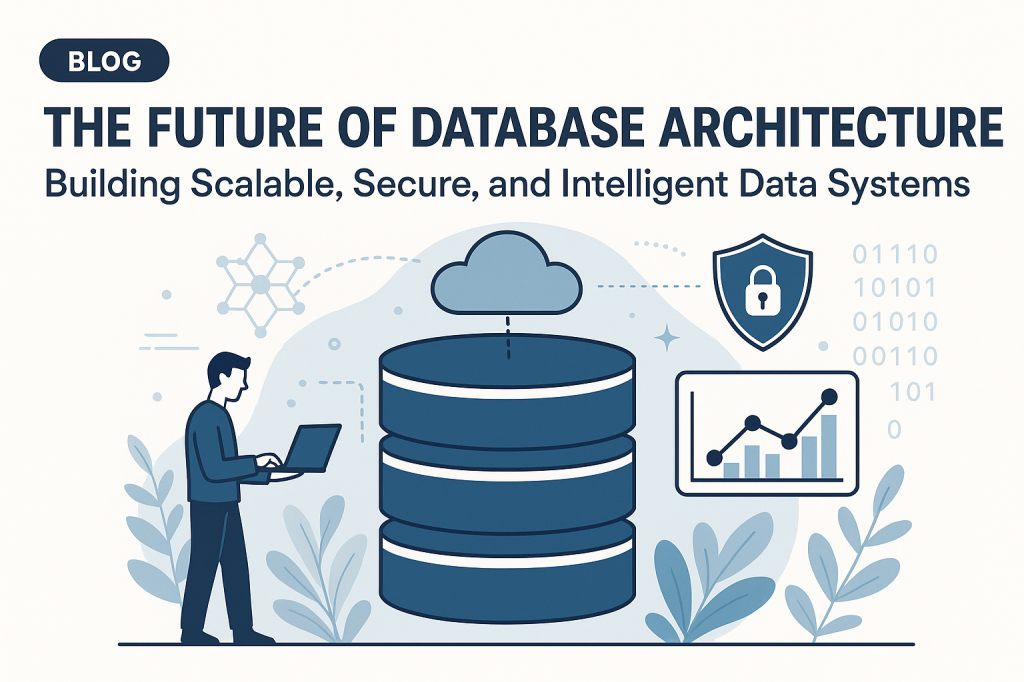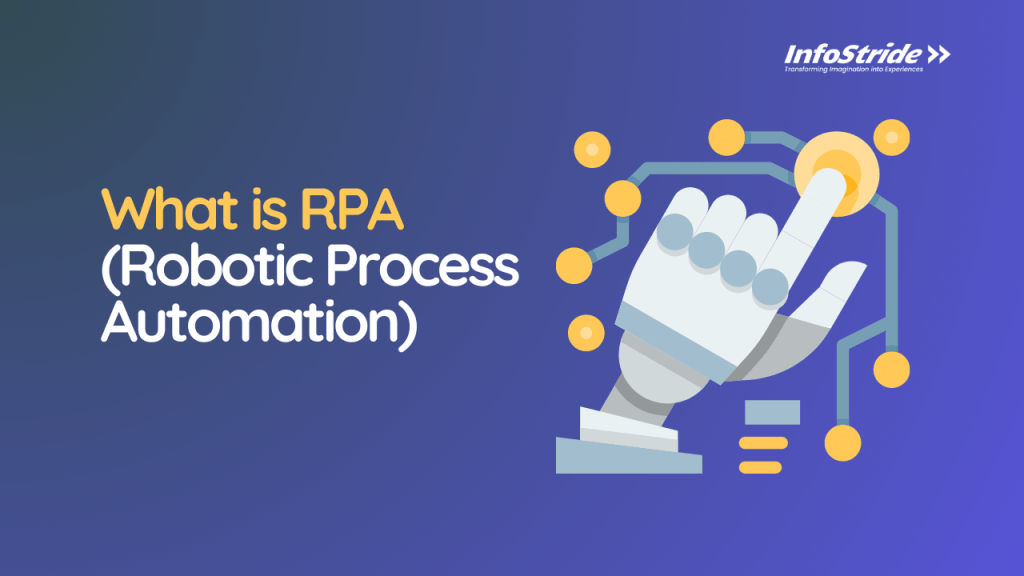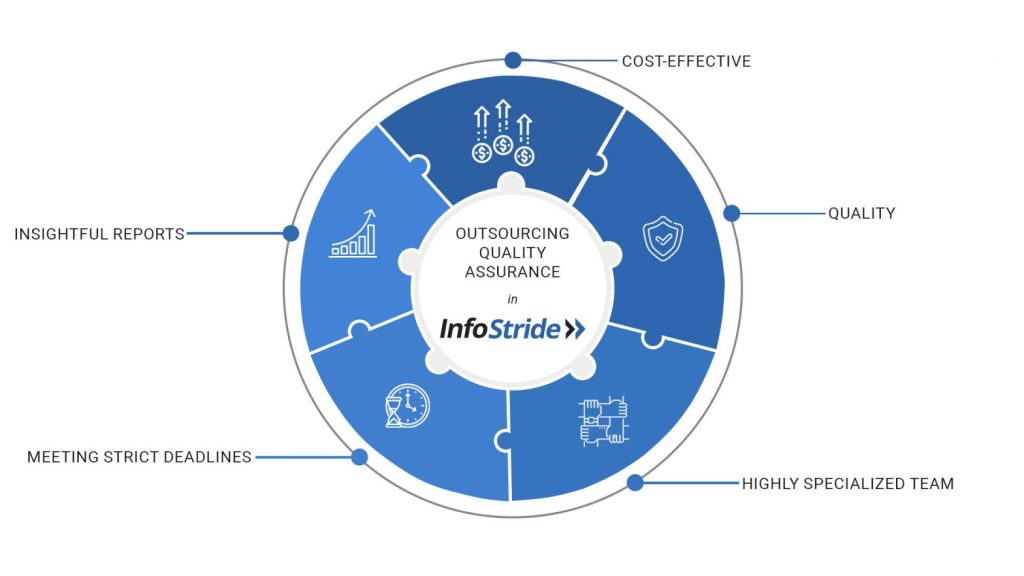In the rapidly evolving world of healthcare, digital transformation is no longer a futuristic concept but a present-day reality. According to a report by MarketsandMarkets, the global digital health market is projected to grow from $175 billion in 2019 to over $660 billion by 2025, reflecting an annual growth rate of 27.9% . This surge is driven by the increasing adoption of digital health platforms, which are revolutionizing how healthcare providers manage and leverage data to improve patient outcomes and operational efficiency.
What is a Healthcare Data Platform?
A healthcare data platform is a sophisticated and integrated digital ecosystem designed to centralize and streamline the management of health-related data. These platforms are built to handle a wide variety of data types and sources, facilitating seamless access and meaningful insights for healthcare providers, researchers, and administrators. Here’s a breakdown of the core functions and components of a typical healthcare data platform:
1. Data Collection and Integration:
- Diverse Data Sources: These platforms aggregate data from multiple sources, including electronic health records (EHRs), medical imaging, lab results, wearable devices, and patient-generated data.
- Data Interoperability: They enable interoperability, ensuring that different systems and devices can communicate and exchange data effectively. This is crucial for providing a comprehensive view of patient health.
2. Data Storage and Management:
- Centralized Repository: Healthcare data platforms provide a secure, centralized repository where all health data is stored. This centralized storage is designed to be scalable and flexible to accommodate growing data volumes.
- Data Governance: They incorporate robust data governance frameworks to ensure data quality, consistency, and compliance with regulatory standards like HIPAA.
3. Data Analysis and Reporting:
- Advanced Analytics: These platforms leverage advanced analytics tools, including artificial intelligence (AI) and machine learning (ML), to process and analyze large datasets. This analysis can reveal patterns and insights that inform clinical and operational decisions.
- Customizable Dashboards and Reports: Users can create customizable dashboards and reports to visualize data in ways that are most relevant to their needs, facilitating easier interpretation and action.
4. Security and Privacy:
- Data Encryption: To protect sensitive health information, these platforms use encryption both in transit and at rest.
- Access Controls: They implement stringent access controls to ensure that only authorized personnel can access specific data, thus maintaining patient privacy and data security.
5. Integration with Other Systems:
- API Integration: Healthcare data platforms often support API integration, allowing them to connect with various third-party applications and services. This integration enables seamless data flow and interoperability with other healthcare IT systems.
- Clinical and Operational Tools: They can integrate with tools used for clinical decision support, patient management, and administrative operations, enhancing the overall efficiency and effectiveness of healthcare delivery.
Digital Health Platform
A digital health platform is a type of healthcare data platform specifically designed to support digital health initiatives. These initiatives encompass a wide range of technology-driven approaches aimed at improving healthcare delivery and outcomes. Here’s how digital health platforms contribute to this mission:
1. Telehealth and Remote Monitoring:
- Telehealth Services: Digital health platforms facilitate telehealth services, allowing healthcare providers to deliver care remotely through video consultations, remote diagnostics, and e-prescriptions.
- Remote Patient Monitoring: These platforms support the collection and analysis of data from wearable devices and home monitoring systems, enabling continuous tracking of patient health outside traditional clinical settings.
2. Patient Engagement and Self-Management:
- Patient Portals: Digital health platforms often include patient portals that give individuals access to their health records, lab results, and treatment plans, fostering greater engagement in their own care.
- Health Apps: They integrate with mobile health apps that provide tools for managing chronic conditions, tracking health metrics, and receiving health education, empowering patients to take proactive steps in their health management.
3. Personalized Medicine:
- Data-Driven Insights: By analyzing genetic, lifestyle, and health data, digital health platforms can offer personalized treatment recommendations and preventive care strategies tailored to individual patients.
- Precision Medicine: They support precision medicine initiatives that use detailed patient data to tailor therapies to individual genetic profiles and other specific health characteristics.
4. Improved Coordination and Communication:
- Integrated Care Teams: Digital health platforms facilitate better communication and coordination among multidisciplinary care teams, ensuring that all healthcare providers have access to the same comprehensive patient information.
- Patient-Provider Communication: They enhance direct communication between patients and providers through secure messaging and teleconsultation features, improving accessibility and patient satisfaction.
Importance in Modern Healthcare
Healthcare data platforms are indispensable in the modern healthcare landscape for several compelling reasons:
1. Enhanced Patient Outcomes:
- Comprehensive Health Data: By integrating and analyzing diverse health data, these platforms provide a complete picture of patient health, enabling more accurate diagnoses and personalized treatment plans.
- Proactive Care Management: They support proactive care management by identifying potential health issues early and facilitating timely interventions, thus improving patient outcomes and reducing hospitalizations.
2. Operational Efficiency:
- Streamlined Workflows: Healthcare data platforms streamline administrative processes and reduce redundant tasks, freeing up healthcare professionals to focus more on patient care.
- Cost Reduction: By optimizing resource allocation and improving operational efficiencies, these platforms help reduce costs for healthcare providers.
3. Support for Population Health:
- Population Health Insights: By analyzing data across large populations, healthcare data platforms provide insights into public health trends and identify at-risk groups, supporting better community health management.
- Resource Allocation: They enable more effective allocation of resources to areas where they are most needed, improving overall healthcare delivery.
4. Innovation and Research:
- Facilitating Research: Access to large, integrated datasets accelerates medical research and innovation, leading to the development of new treatments and healthcare strategies.
- Data-Driven Decision Making: These platforms empower healthcare organizations to make data-driven decisions, fostering a culture of continuous improvement and innovation.
5. Compliance and Security:
- Regulatory Compliance: Healthcare data platforms are designed to comply with stringent regulatory requirements, ensuring that patient data is handled securely and responsibly.
- Enhanced Security: They offer robust security features to protect sensitive health information from breaches and cyber threats, maintaining trust and confidentiality.
Also Read – Hospital Management Software Guide: Benefits & Development
Key Features of Healthcare Data Platforms
Healthcare data platforms are the backbone of modern healthcare IT systems, providing the infrastructure needed to manage and leverage vast amounts of health-related data. To understand their transformative impact, let’s explore three key features: data integration, interoperability, and advanced healthcare analytics software.
Data Integration
Seamless Aggregation from Diverse Sources: One of the primary strengths of healthcare data platforms is their ability to integrate data from a myriad of sources. This capability is essential in creating a comprehensive view of patient health and ensuring that healthcare providers have all the information they need to deliver high-quality care. Here’s how data integration is achieved:
1. Electronic Health Records (EHRs):
- Centralized Patient Records: EHRs are the digital counterparts of traditional paper records, containing detailed information about patient histories, treatments, and outcomes. Healthcare data platforms integrate EHR data into a centralized system, making it easily accessible to authorized providers across different departments.
- Real-Time Updates: This integration allows for real-time updates and synchronization of patient information, ensuring that all healthcare professionals have the most current data at their fingertips.
2. Laboratory and Diagnostic Data:
- Lab Results and Imaging: Healthcare data platforms consolidate lab results and diagnostic imaging reports, providing a complete view of diagnostic data. This integration is crucial for timely and accurate diagnosis, as it enables quick access to essential test results and images.
- Automated Data Entry: By automating the integration of lab and diagnostic data, these platforms eliminate the need for manual data entry, reducing errors and improving efficiency.
3. Wearable Devices and Remote Monitoring:
- Continuous Health Monitoring: With the rise of wearable health technologies, such as fitness trackers and smartwatches, healthcare data platforms integrate data from these devices to monitor patients’ health metrics continuously. This integration supports proactive care management by alerting providers to potential health issues before they become critical.
- Patient-Generated Data: Platforms can also incorporate data generated by patients through mobile health apps and home monitoring systems, offering insights into their daily activities, medication adherence, and overall health status.
4. Third-Party Applications and Data Sources:
API Integration: Many healthcare data platforms use APIs (Application Programming Interfaces) to integrate data from third-party applications and external databases. This capability expands the platform’s functionality and allows it to incorporate additional health data from sources like public health databases, genomic data repositories, and social determinants of health.
Benefits of Data Integration:
- Comprehensive Patient View: Integration of data from multiple sources provides a holistic view of patient health, enabling more informed decision-making.
- Improved Care Coordination: By having all relevant data in one place, healthcare providers can coordinate care more effectively, reducing the risk of medical errors and duplicative testing.
- Enhanced Data Accuracy and Timeliness: Automated integration ensures that data is accurate and up-to-date, which is critical for making timely clinical decisions.
Interoperability
Facilitating Seamless Data Exchange: Interoperability is the cornerstone of modern healthcare data platforms. It refers to the ability of different IT systems and software applications to communicate, exchange, and interpret shared data cohesively. This feature is vital for ensuring that disparate healthcare systems can work together seamlessly, thereby improving care delivery and operational efficiency. Here’s why interoperability matters:
1. Standards-Based Communication:
- HL7 and FHIR Standards: Healthcare data platforms often employ standards like Health Level Seven (HL7) and Fast Healthcare Interoperability Resources (FHIR) to enable consistent and secure data exchange between systems. These standards define how data should be formatted and transmitted, facilitating interoperability across different software applications.
- DICOM for Imaging: For diagnostic imaging, the Digital Imaging and Communications in Medicine (DICOM) standard is used to ensure that images and related data can be shared and viewed across different platforms and devices.
2. Cross-System Data Exchange:
- Connecting Various Systems: Interoperability allows healthcare data platforms to connect and exchange data with a wide range of systems, including EHRs, laboratory information systems (LIS), pharmacy management systems, and billing systems. This connectivity ensures that all relevant patient information is available to providers when and where they need it.
- Supporting Care Continuity: When patients transition between different care settings (e.g., from a hospital to a rehabilitation center), interoperable systems ensure that their data moves with them, supporting continuity of care and reducing the risk of information loss.
3. Enabling Collaborative Care:
- Shared Data Across Networks: Interoperability supports collaborative care by allowing different healthcare organizations to share patient data securely. This is particularly important in integrated care networks, where multiple providers work together to manage a patient’s care.
- Improved Patient Access: It also enhances patient access to their health information, enabling them to view their records and share them with different providers, which is essential for patient-centered care.
4. Compliance and Security:
- Regulatory Requirements: Interoperability helps healthcare organizations comply with regulatory requirements, such as those mandated by the Health Information Technology for Economic and Clinical Health (HITECH) Act and the 21st Century Cures Act, which promote data sharing and patient access to health information.
- Secure Data Exchange: Platforms that support interoperability typically include robust security measures to protect data during exchange, ensuring that sensitive health information is transmitted securely and remains confidential.
Benefits of Interoperability:
- Streamlined Clinical Workflows: Seamless data exchange reduces administrative burdens and allows healthcare providers to focus more on patient care.
- Enhanced Patient Safety: Interoperable systems reduce the risk of medical errors by ensuring that all providers have access to accurate and complete patient information.
- Efficient Resource Utilization: By eliminating redundant tests and procedures, interoperability helps in optimizing the use of healthcare resources and reducing costs.
Healthcare Analytics Software
Deriving Actionable Insights from Health Data: Advanced analytics tools embedded within healthcare data platforms are instrumental in transforming raw health data into actionable insights. These tools use sophisticated algorithms and statistical models to analyze data, uncover patterns, and support decision-making. Here’s how healthcare analytics software is utilized:
1. Predictive Analytics:
- Forecasting Health Outcomes: Predictive analytics use historical and real-time data to forecast future health outcomes, identify at-risk patients, and suggest preventive measures. For example, predictive models can anticipate patient readmissions, enabling healthcare providers to take proactive steps to prevent them.
- Risk Stratification: These tools help stratify patient populations based on risk levels, allowing healthcare providers to prioritize care for those who need it most and allocate resources effectively.
2. Descriptive and Diagnostic Analytics:
- Understanding Current Trends: Descriptive analytics summarize historical data to provide insights into current trends and performance metrics. This can include tracking patient flow, resource utilization, and clinical outcomes.
- Identifying Root Causes: Diagnostic analytics go a step further by identifying the root causes of observed trends. For instance, if a hospital experiences a spike in infection rates, diagnostic analytics can help pinpoint contributing factors and guide corrective actions.
3. Prescriptive Analytics:
- Optimizing Treatment Plans: Prescriptive analytics recommend optimal actions based on data analysis. In healthcare, this can mean suggesting the best treatment plans for patients based on their individual characteristics and clinical history.
- Resource Management: These tools can also be used to optimize resource allocation, such as scheduling staff based on patient demand patterns or managing inventory levels for medical supplies.
4. Real-Time Analytics:
- Immediate Insights: Real-time analytics provide immediate insights by processing data as it is collected. This is crucial for time-sensitive applications, such as monitoring vital signs in critical care or detecting anomalies in patient data that require immediate attention.
- Operational Efficiency: In addition to clinical applications, real-time analytics can enhance operational efficiency by monitoring workflow processes and identifying bottlenecks as they occur.
5. Machine Learning and Artificial Intelligence:
- Advanced Data Analysis: Machine learning (ML) and artificial intelligence (AI) techniques are increasingly being used to analyze complex health data. These technologies can identify subtle patterns that might be missed by traditional analysis, supporting early detection of diseases and personalized treatment recommendations.
- Automating Routine Tasks: AI-powered tools can automate routine tasks such as data entry, coding, and administrative functions, freeing up healthcare professionals to focus on more critical aspects of patient care.
Benefits of Healthcare Analytics Software:
- Improved Clinical Decision-Making: Advanced analytics provide healthcare professionals with evidence-based insights that support more accurate and timely clinical decisions.
- Enhanced Patient Outcomes: By identifying risks early and suggesting optimal interventions, analytics tools contribute to better patient outcomes and reduced hospitalizations.
- Operational Excellence: Analytics improve operational efficiency by optimizing resource utilization, reducing waste, and enhancing overall productivity in healthcare settings.
Leading Healthcare Analytics Software Companies
The healthcare analytics software market is booming, driven by the need for advanced data solutions that improve patient care, operational efficiency, and strategic decision-making. Numerous companies are at the forefront of this transformation, offering cutting-edge technologies that harness the power of big data, AI, and machine learning. Here’s a look at some of the leading players in this space, their innovative solutions, and real-world success stories showcasing their impact.
Top Players
1. IBM Watson Health

- Overview: IBM Watson Health is a pioneer in the healthcare analytics space, leveraging its renowned AI capabilities to deliver deep insights into healthcare data.
- Key Offerings: Their suite includes IBM Watson Health Analytics, IBM Watson for Oncology, and IBM Watson Care Manager, which provide solutions ranging from predictive analytics to personalized treatment plans and care management.
2. Optum

- Overview: A subsidiary of UnitedHealth Group, Optum is a leading health services and innovation company that integrates healthcare data analytics with clinical and operational expertise.
- Key Offerings: Optum’s analytics solutions include OptumIQ, which combines data and intelligence for actionable insights, and Optum Performance Analytics, which focuses on improving financial and clinical outcomes.
3. Cerner Corporation
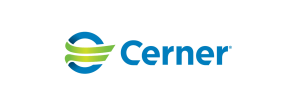
- Overview: Cerner is a global leader in health information technology and services, known for its comprehensive EHR systems and analytics platforms.
- Key Offerings: Cerner’s Health Analytics platform provides tools for population health management, clinical analytics, and operational efficiency. Their HealtheIntent platform integrates data from multiple sources for predictive and prescriptive analytics.
4. SAS Institute
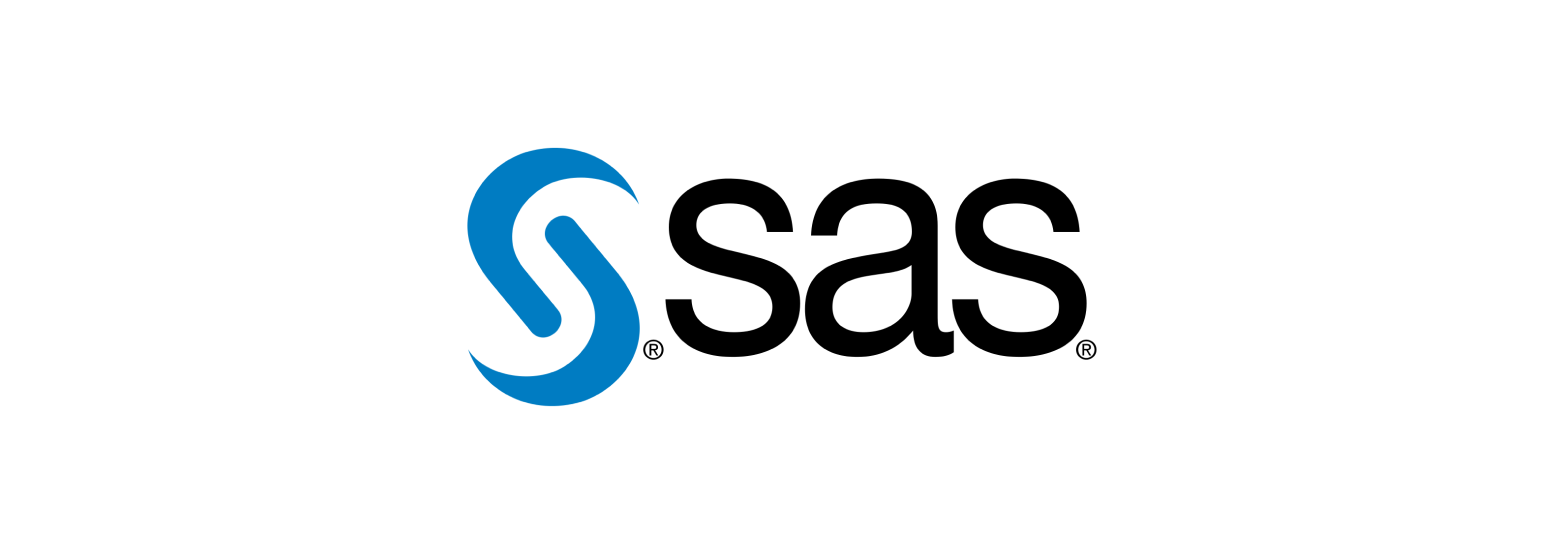
- Overview: SAS is a major player in analytics software, with a strong presence in the healthcare sector. They provide a range of solutions designed to manage and analyze healthcare data.
- Key Offerings: SAS Health offers analytics for clinical data, patient safety, and operational performance. Their tools support data integration, advanced analytics, and AI applications in healthcare.
5. Epic Systems Corporation
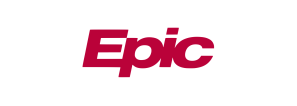
- Overview: Epic is one of the largest providers of health information technology, known for its comprehensive EHR system that integrates seamlessly with its analytics tools.
- Key Offerings: Epic’s Cogito Analytics platform provides real-time data insights across clinical, financial, and operational areas. Their SlicerDicer tool enables intuitive data exploration and reporting.
6. Oracle Health
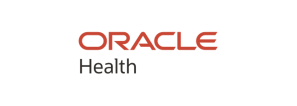
- Overview: Oracle Health is a leading provider of data management and cloud solutions, offering robust analytics capabilities tailored to the healthcare industry.
- Key Offerings: Oracle’s suite includes Oracle Health Analytics, which supports predictive analytics, and Oracle Health Management, which integrates data across various systems to enhance clinical and operational decision-making.
7. Health Catalyst
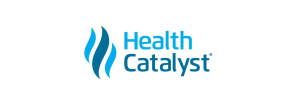
- Overview: Health Catalyst specializes in data warehousing, analytics, and outcomes improvement for healthcare organizations, leveraging their extensive expertise in clinical and operational data.
- Key Offerings: Their platform includes the Health Catalyst Data Operating System (DOS), which provides a comprehensive solution for data integration, analytics, and applications designed to improve outcomes.
8. Inovalon
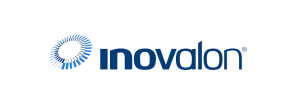
- Overview: Inovalon provides cloud-based platforms empowering healthcare organizations to improve quality and financial performance through data-driven insights.
- Key Offerings: Their Inovalon ONE® Platform integrates real-time analytics, data aggregation, and data visualization, supporting a wide range of applications from patient care to revenue cycle management.
Innovative Solutions
1. IBM Watson Health – AI-Driven Insights:
- Innovation: IBM Watson Health utilizes AI and machine learning to analyze complex healthcare data and provide insights that support personalized patient care and optimized clinical workflows.
- Example Solution: Watson for Oncology uses AI to suggest evidence-based treatment options tailored to individual patients, drawing from vast amounts of medical literature and clinical guidelines.
2. Optum – Comprehensive Data Integration:
- Innovation: Optum’s analytics platforms integrate data from diverse sources, including EHRs, claims, and social determinants of health, providing a holistic view of patient and population health.
- Example Solution: OptumIQ combines clinical, financial, and operational data to generate predictive models that support proactive care management and operational planning.
3. Cerner – Population Health Management:
- Innovation: Cerner’s HealtheIntent platform is designed for population health management, integrating data from various sources to deliver actionable insights that improve community health outcomes.
- Example Solution: HealtheIntent’s predictive analytics tools identify high-risk patients and suggest interventions that can prevent adverse health events, reducing hospital admissions and healthcare costs.
4. SAS Institute – Advanced Predictive Analytics:
- Innovation: SAS Health leverages advanced predictive analytics and AI to support clinical decision-making and operational efficiency in healthcare organizations.
- Example Solution: SAS Visual Analytics provides interactive data visualization and exploration capabilities, helping healthcare providers to uncover patterns and trends in patient data quickly and effectively.
5. Epic Systems – Real-Time Data Insights:
- Innovation: Epic’s analytics tools provide real-time insights into clinical and operational data, enabling healthcare providers to make informed decisions quickly.
- Example Solution: Epic’s Cosmos platform aggregates de-identified patient data from multiple healthcare organizations, providing a powerful resource for large-scale data analysis and research.
6. Oracle Health – Cloud-Based Analytics:
- Innovation: Oracle Health offers cloud-based analytics solutions that support scalable, secure, and flexible data management across healthcare organizations.
- Example Solution: Oracle’s Health Management Cloud integrates clinical, operational, and financial data, supporting comprehensive analysis and strategic decision-making in healthcare systems.
7. Health Catalyst – Data-Driven Outcomes Improvement:
- Innovation: Health Catalyst focuses on outcomes improvement through data-driven insights, offering tools that support clinical, operational, and financial performance enhancement.
- Example Solution: The Health Catalyst DOS platform integrates and analyzes data across the continuum of care, providing insights that help healthcare organizations to improve patient outcomes and reduce costs.
8. Inovalon – Real-Time Data Aggregation:
- Innovation: Inovalon’s cloud-based platforms enable real-time data aggregation and analytics, providing up-to-date insights that support dynamic healthcare management.
- Example Solution: Inovalon’s Converged Patient Data solution aggregates and analyzes data from multiple sources in real-time, enabling healthcare providers to make timely, informed decisions that improve patient care.
Case Studies
1. IBM Watson Health – New York’s Hospital for Special Surgery (HSS):
- Challenge: HSS aimed to improve its surgical outcomes by leveraging data analytics to identify best practices and areas for improvement.
- Solution: By implementing IBM Watson Health’s AI-powered analytics tools, HSS was able to analyze vast amounts of surgical data and identify factors contributing to successful outcomes.
- Result: The insights gained led to the adoption of new surgical protocols and best practices, significantly reducing post-operative complications and improving patient satisfaction.
2. Optum – Montefiore Health System:
- Challenge: Montefiore Health System needed to manage a large and diverse patient population more effectively, particularly focusing on reducing hospital readmissions.
- Solution: Optum’s analytics platform was deployed to integrate and analyze data from EHRs, claims, and social determinants of health, providing a comprehensive view of patient health.
- Result: Using predictive analytics, Montefiore identified high-risk patients and implemented targeted interventions, leading to a significant reduction in hospital readmissions and improved patient care.
3. Cerner – Children’s Mercy Kansas City:
- Challenge: Children’s Mercy aimed to enhance its population health management capabilities to better serve its pediatric patients.
- Solution: Cerner’s HealtheIntent platform was used to integrate data from various sources, enabling a more complete understanding of patient needs and risk factors.
- Result: The platform’s analytics capabilities helped Children’s Mercy identify high-risk populations and implement preventive care strategies, improving overall pediatric health outcomes and reducing healthcare costs.
4. SAS Institute – Cleveland Clinic:
- Challenge: Cleveland Clinic sought to improve its patient care and operational efficiency through advanced data analytics.
- Solution: SAS’s analytics tools were used to analyze clinical, operational, and financial data, providing insights that informed decision-making and process improvements.
- Result: The implementation of SAS analytics led to enhanced patient care, streamlined operations, and better resource management, contributing to Cleveland Clinic’s reputation as a leader in healthcare innovation.
5. Epic Systems – Mercy Health:
- Challenge: Mercy Health needed to improve its clinical outcomes and operational efficiency across its network of hospitals and clinics.
- Solution: Epic’s Cogito Analytics platform was implemented to provide real-time data insights and support decision-making across clinical and operational domains.
- Result: Mercy Health achieved significant improvements in patient care and operational performance, with better patient outcomes and reduced costs through optimized resource utilization.
6. Oracle Health – Northwell Health:
- Challenge: Northwell Health aimed to enhance its data management capabilities and support strategic decision-making with advanced analytics.
- Solution: Oracle’s Health Management Cloud was deployed to integrate and analyze data from various clinical and operational systems, providing comprehensive insights.
- Result: Northwell Health leveraged these insights to improve patient care, enhance operational efficiency, and support strategic planning, contributing to its growth and success as a leading healthcare provider.
7. Health Catalyst – Allina Health:
- Challenge: Allina Health wanted to improve its clinical outcomes and reduce costs through data-driven insights.
- Solution: Health Catalyst’s Data Operating System (DOS) was used to integrate and analyze data across Allina Health’s network, supporting clinical and operational performance improvement initiatives.
- Result: Allina Health saw substantial improvements in patient outcomes and operational efficiency, with data-driven insights leading to enhanced care protocols and reduced healthcare costs.
8. Inovalon – Humana:
- Challenge: Humana needed to enhance its healthcare quality and performance metrics to better serve its members.
- Solution: Inovalon’s cloud-based analytics platform was deployed to aggregate and analyze data from multiple sources, providing real-time insights into healthcare quality and performance.
- Result: Humana achieved significant improvements in healthcare quality metrics, member satisfaction, and operational efficiency, supported by the actionable insights from Inovalon’s analytics tools.
Also Read – Healthcare App Development Cost in 2024
How to Choose the Right Healthcare Analytics Platform
Selecting the right healthcare analytics platform is crucial for healthcare organizations aiming to leverage data for improved patient outcomes, operational efficiency, and strategic insights. With a myriad of options available, it’s essential to carefully evaluate platforms based on key considerations and specific organizational needs. In this section, we’ll guide you through the decision-making process, comparing custom-built versus off-the-shelf solutions, and highlighting critical factors like scalability, flexibility, and user experience.
Key Considerations
When choosing a healthcare analytics platform, several factors should guide your decision:
1. Integration Capabilities:
- Ensure the platform can seamlessly integrate with existing systems such as EHRs, lab systems, and other healthcare IT infrastructure.
- Look for platforms that support data integration from various sources, including wearable devices and third-party applications.
2. Data Security and Compliance:
- Data security is paramount in healthcare. The platform should comply with industry regulations like HIPAA and GDPR.
- Evaluate the platform’s data encryption, access control, and auditing capabilities to safeguard sensitive health information.
3. Analytics and Reporting Features:
- Assess the range and depth of analytics tools available, including predictive, descriptive, and prescriptive analytics.
- Consider the platform’s ability to generate customizable reports and visualizations that meet your organization’s specific needs.
4. Cost and ROI:
- Evaluate the total cost of ownership, including initial investment, implementation costs, and ongoing maintenance.
- Consider the potential return on investment in terms of improved patient care, operational efficiency, and cost savings.
5. Vendor Reputation and Support:
- Research the platform provider’s reputation in the healthcare industry, including customer reviews and case studies.
- Ensure robust customer support, training, and documentation are available to facilitate smooth implementation and usage.
Custom vs. Readymade Platforms
When it comes to healthcare analytics platforms, organizations can choose between custom-built solutions tailored to their specific needs or ready-made (off-the-shelf) platforms with pre-built features. Each option has its own set of advantages and disadvantages.
Custom Platforms
Benefits of Custom-Built Solutions:
1. Tailored Fit:
- Custom platforms are designed to meet the unique requirements of your organization, ensuring that all functionalities align perfectly with your workflows and objectives.
- They offer flexibility in integrating with existing systems and processes, allowing for a more cohesive and efficient data environment.
2. Scalability and Adaptability:
- Custom solutions can be developed with scalability in mind, allowing the platform to grow and evolve alongside your organization.
- They provide the flexibility to adapt to new regulations, changing market conditions, and emerging technologies.
3. Competitive Advantage:
- Custom platforms can incorporate proprietary algorithms and analytics models, giving your organization a competitive edge in data-driven decision-making.
- They enable unique features and capabilities that differentiate your services from competitors.
Challenges of Custom-Built Solutions:
1. Higher Initial Costs:
- Developing a custom platform typically requires a significant upfront investment in terms of time, money, and resources.
- There may be additional costs for ongoing maintenance, updates, and technical support.
2. Longer Development Time:
- Building a custom solution from scratch can take considerable time, potentially delaying the deployment and realization of benefits.
- It requires close collaboration between your organization and the development team, which can be resource-intensive.
3. Complexity and Risk:
- Custom projects can be complex and carry the risk of scope creep, budget overruns, and unforeseen technical challenges.
- Ensuring robust testing and quality assurance processes is critical to mitigate these risks.
Readymade Platforms
Advantages of Off-the-Shelf Solutions:
1. Ease of Deployment:
- Ready-made platforms are designed for quick and easy deployment, allowing organizations to start leveraging analytics capabilities with minimal delay.
- They come with pre-built features and functionalities that are immediately accessible and usable.
2. Lower Initial Cost:
- Off-the-shelf solutions typically have lower initial costs compared to custom-built platforms, making them more accessible for organizations with limited budgets.
- They often include bundled support and updates, reducing the need for ongoing investment in maintenance.
3. Proven Reliability:
- Ready-made platforms have been tested and used by multiple organizations, providing a track record of reliability and performance.
- They are regularly updated to incorporate the latest advancements in technology and compliance with industry standards.
Disadvantages of Off-the-Shelf Solutions:
1. Limited Customization:
- Pre-built platforms may not fully align with your organization’s specific needs or workflows, leading to potential gaps in functionality.
- Customization options are often limited, restricting the ability to tailor the platform to unique requirements.
2. Potential Integration Issues:
- Off-the-shelf solutions might face challenges integrating seamlessly with existing systems and processes, leading to data silos or workflow disruptions.
- They may require additional middleware or third-party tools to achieve full integration.
3. Scalability Constraints:
- Some ready-made platforms may have limitations in scalability, which can become an issue as your organization grows and data needs evolve.
- They may not be as adaptable to rapid changes or specific strategic shifts in your organization.
Scalability and Flexibility
Choosing a platform that can scale and adapt to your organization’s changing needs is crucial for long-term success. Here’s what to consider:
1. Data Volume and Growth:
- Ensure the platform can handle large volumes of data and scale as your organization’s data grows. This includes support for big data technologies and cloud-based storage solutions.
- Evaluate the platform’s ability to process and analyze data in real-time or near-real-time to support dynamic decision-making.
2. Modular Architecture:
- Look for platforms with a modular architecture that allows you to add or remove functionalities as needed. This flexibility is vital for adapting to new technologies and business requirements.
- A modular approach also supports phased implementation, enabling gradual rollout and reducing disruption to existing operations.
Future-Proofing:
- Consider the platform’s roadmap and commitment to innovation. It should be able to incorporate emerging technologies like AI, machine learning, and advanced analytics as they become relevant.
- Assess the vendor’s track record in keeping the platform updated with the latest advancements and compliance requirements.
User Experience
The user experience is a critical factor in the adoption and effectiveness of a healthcare analytics platform. A platform with a user-friendly interface can significantly enhance usability for both healthcare providers and patients. Consider the following aspects:
1. Intuitive Design:
- The platform should have a clean, intuitive interface that makes it easy for users to navigate and access the tools and information they need.
- Features like customizable dashboards, drag-and-drop functionality, and interactive data visualizations enhance user engagement and efficiency.
2. Role-Based Access:
- Ensure the platform supports role-based access control, allowing users to see and interact with data relevant to their roles while maintaining security and compliance.
- This capability helps streamline workflows by providing tailored experiences for different user groups, such as clinicians, administrators, and patients.
3. Training and Support:
- Evaluate the availability of training resources, user guides, and support services to help users get the most out of the platform.
- Ongoing support and user communities can be invaluable in troubleshooting issues and sharing best practices.
4. Mobile Accessibility:
- With the increasing use of mobile devices in healthcare, it’s important that the platform offers mobile-friendly interfaces or dedicated mobile apps.
- Mobile accessibility allows healthcare providers to access data and analytics on the go, enhancing their ability to deliver timely and effective care.
Choosing the right healthcare analytics platform involves a careful evaluation of various factors, from integration and security to scalability and user experience. Whether opting for a custom-built solution tailored to your specific needs or a ready-made platform with proven reliability, the goal is to empower your organization to leverage data effectively for improved patient outcomes and operational excellence. By focusing on these key considerations, you can make an informed decision that aligns with your strategic objectives and positions your organization for long-term success in the rapidly evolving healthcare landscape.
Also Read – Comprehensive Guide to Develop a Healthcare App in 2024
Challenges and Future Trends
The landscape of healthcare data platforms is dynamic and evolving, offering both significant opportunities and complex challenges. As healthcare organizations increasingly rely on these platforms for data-driven decision-making, it’s essential to address critical issues related to data security, integration, and to stay abreast of emerging trends that will shape the future of healthcare analytics.
Data Security and Privacy
In the realm of healthcare, data security and privacy are paramount. Healthcare data platforms handle vast amounts of sensitive patient information, making them prime targets for cyberattacks and data breaches. Ensuring robust data security and compliance with regulations such as the Health Insurance Portability and Accountability Act (HIPAA) is a significant challenge.
1. Ensuring Data Security:
- Encryption: Implementing strong encryption protocols for data at rest and in transit is crucial to protect sensitive information from unauthorized access.
- Access Controls: Utilizing advanced access control mechanisms, including multi-factor authentication and role-based access, helps ensure that only authorized personnel can access specific data.
- Regular Audits: Conducting regular security audits and vulnerability assessments can identify and address potential security weaknesses before they can be exploited.
2. Maintaining Compliance with Regulations:
- HIPAA Compliance: Platforms must adhere to HIPAA guidelines, which include ensuring data confidentiality, integrity, and availability. This involves implementing administrative, physical, and technical safeguards.
- GDPR Compliance: For organizations handling data of EU citizens, compliance with the General Data Protection Regulation (GDPR) is mandatory, focusing on data protection and privacy rights.
- Continuous Monitoring: Ongoing monitoring and logging of data access and activities help maintain compliance and provide a trail for audits and investigations.
3. Mitigating Risks of Data Breaches:
- Incident Response Plans: Developing and maintaining a comprehensive incident response plan is essential for promptly addressing and mitigating the impact of data breaches.
- Employee Training: Regular training for employees on data security best practices and phishing awareness can significantly reduce the risk of breaches caused by human error.
- Partner Security: Ensuring that third-party vendors and partners comply with the same data security standards is critical, as they can be potential weak points in the data security chain.
Integration Issues
Integrating healthcare data platforms with existing systems and disparate data sources is often fraught with challenges. Effective data integration is crucial for achieving a unified view of patient information and enabling seamless data exchange across the healthcare ecosystem.
1. Common Integration Challenges:
- Data Silos: Healthcare organizations often operate with multiple, isolated systems, creating data silos that hinder comprehensive data analysis and interoperability.
- Incompatible Formats: Different systems may store data in varying formats, complicating the integration process and requiring extensive data normalization and transformation efforts.
- Legacy Systems: Many healthcare providers rely on outdated legacy systems that are not designed for modern data integration, posing significant hurdles in achieving seamless connectivity.
2. Overcoming Integration Challenges:
- Standardized Protocols: Adopting standardized data exchange protocols like HL7 and FHIR (Fast Healthcare Interoperability Resources) can facilitate smoother integration across systems.
- API-Based Integration: Utilizing Application Programming Interfaces (APIs) allows for more flexible and scalable integration, enabling systems to communicate and exchange data more effectively.
- Data Interoperability Solutions: Investing in middleware and interoperability platforms that bridge the gap between disparate systems can streamline data integration processes.
3. Best Practices for Effective Integration:
- Comprehensive Planning: A detailed integration plan, including a thorough assessment of existing systems and data sources, helps anticipate challenges and develop effective solutions.
- Incremental Implementation: Gradual implementation of integration projects allows for manageable progress and easier troubleshooting of issues as they arise.
- Stakeholder Collaboration: Engaging stakeholders from various departments ensures that integration efforts align with organizational needs and receive the necessary support for successful execution.
Future Trends
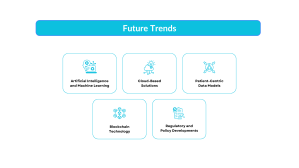
The future of healthcare data platforms is being shaped by emerging technologies and evolving industry trends. As these platforms continue to advance, they promise to revolutionize healthcare delivery, patient care, and operational efficiency.
1. Artificial Intelligence and Machine Learning:
- Predictive Analytics: AI and machine learning enable predictive analytics, allowing healthcare providers to anticipate patient needs, identify risk factors, and intervene proactively to improve outcomes.
- Natural Language Processing (NLP): NLP technologies facilitate the extraction of valuable insights from unstructured data sources like clinical notes and patient records, enhancing data comprehensiveness and utility.
- Automated Decision Support: AI-driven decision support systems can analyze vast amounts of data to provide real-time recommendations to clinicians, improving diagnostic accuracy and treatment efficacy.
2. Cloud-Based Solutions:
- Scalability and Flexibility: Cloud-based healthcare data platforms offer unparalleled scalability and flexibility, allowing organizations to expand their data capabilities without significant infrastructure investments.
- Cost Efficiency: Cloud solutions reduce the need for costly on-premises hardware and maintenance, providing a more cost-effective approach to data management and storage.
- Remote Accessibility: The cloud enables remote access to healthcare data, supporting telehealth initiatives and enhancing the ability of healthcare providers to deliver care from anywhere.
3. Patient-Centric Data Models:
- Personalized Medicine: Advances in genomics and personalized medicine rely on data platforms that can integrate and analyze genetic, clinical, and lifestyle data to tailor treatments to individual patients.
- Patient Engagement: Platforms that support patient engagement tools, such as mobile health apps and patient portals, empower patients to actively participate in their care and improve health outcomes.
- Real-Time Monitoring: Wearable devices and IoT sensors integrated with healthcare data platforms enable real-time monitoring of patient health, facilitating timely interventions and continuous care management.
4. Blockchain Technology:
- Data Security: Blockchain technology offers a secure and immutable ledger for healthcare data, enhancing data integrity and reducing the risk of unauthorized access and tampering.
- Interoperability: Blockchain can facilitate secure data exchange across different systems and organizations, promoting interoperability and streamlined data sharing.
- Patient Data Ownership: Blockchain supports models of patient-owned data, giving individuals greater control over their health information and how it is used.
5. Regulatory and Policy Developments:
- Data Governance: Emerging regulations and policies focused on data governance and ethical AI use will shape the development and deployment of healthcare data platforms.
- Telehealth Expansion: Policy shifts towards supporting telehealth and remote care will drive the adoption of data platforms that enable seamless integration and analysis of telehealth data.
- Health Equity Initiatives: Efforts to address health disparities and promote equity in healthcare will influence the design and implementation of data platforms that support diverse and underserved populations.
Navigating the complexities of data security, integration, and staying ahead of future trends is essential for organizations looking to leverage healthcare data platforms effectively. By addressing these challenges and embracing emerging technologies, healthcare providers can harness the full potential of data analytics to deliver better patient care, enhance operational efficiency, and drive innovation in the rapidly evolving healthcare landscape.
Also Read: Top 19 Healthcare Business Ideas for Startups in 2024
Future Outlook: Advancing Healthcare Through Data Platforms
Healthcare data platforms represent a pivotal advancement in modern healthcare, empowering organizations to harness the power of data for enhanced patient care, operational efficiency, and strategic decision-making. From facilitating seamless data integration and interoperability to leveraging advanced analytics and AI-driven insights, these platforms play a crucial role in transforming healthcare delivery.
As healthcare continues to evolve, so do the challenges and opportunities surrounding data security, integration complexities, and the adoption of emerging technologies. Addressing these issues requires a strategic approach and leveraging expertise in healthcare data platform development.
InfoStride: Your Healthcare Data Platform Development Expert
InfoStride specializes in developing robust healthcare data platforms tailored to meet the unique needs of healthcare providers and organizations. With a proven track record of delivering innovative solutions, InfoStride combines deep industry knowledge with cutting-edge technologies to empower healthcare stakeholders with actionable insights and scalable, secure platforms.
Whether you are looking to build a custom healthcare analytics solution, enhance existing systems, or navigate the complexities of data integration and compliance, InfoStride offers comprehensive healthcare software development services and MVP development services to support your goals throughout the development lifecycle.
Contact Us
Transform your healthcare operations with a tailored data platform solution from InfoStride. Reach out to us today to discuss your project requirements and discover how we can help you leverage data for better patient outcomes and operational excellence.


